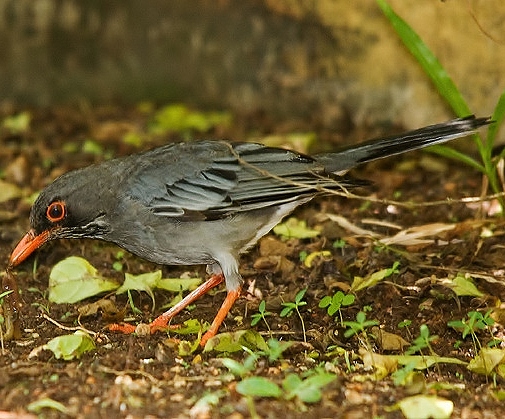 |
| Photo by Alef Castellanos (Flickr) |
Common name:
red-legged thrush (en); tordo-de-patas-vermelhas (pt); merle vantard (fr); zorzal patirrojo (es); rotfußdrossel (de)
Taxonomy:
Order Passeriformes
Family Turdidae
Range:
This species is found in the northern Caribbean, namely in the Bahamas, Cayman Islands, Cuba, Dominica, Dominican Republic, Haiti, Honduras and Puerto Rico.
Size:
These birds are 25-28 cm long and weigh 50-82 g.
Habitat:
The red-legged thrush is found in tropical woodlands and forests, along the edges of mangroves, in scrublands, and in human altered areas including degraded forests, rural gardens, plantations, arable land and within urban areas. They occur from sea level up to an altitude of 1.200 m.
Diet:
They forage on the ground and in the tree canopy, taking invertebrates such as roaches, snails, worms, spiders, ants, grasshoppers and caterpillars, berries, seeds and palm fruits. Occasionally they also take small vertebrates such as tree frogs, lizards and snakes.
Breeding:
Red-legged thrushes breed in January-September. The nest is a bulky cup, built by the female using leaves, rootlets, bark, banana fibres and mud. The nest is placed in a fork in a tree or palm, or sometimes in human structures, 4-10 m above the ground. The female lays 2-4 pale greenish eggs with brownish spots, which are incubated for 11-13 days. The chicks fledge 11-15 days after hatching.
Conservation:
IUCN status – LC (Least Concern)
This species has a relatively large breeding range and, although the global population size has not been quantified, the red-legged thrush is described as common. The population is suspected to be stable in the absence of evidence for any declines or substantial threats.







